Derek Murray
Harmony: Overcoming the hurdles of GPU memory capacity to train massive DNN models on commodity servers
Feb 02, 2022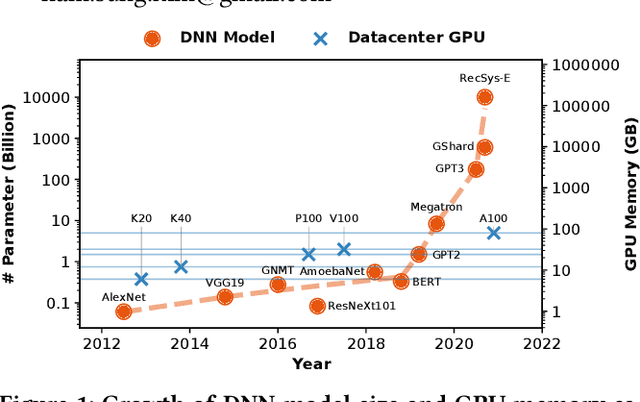
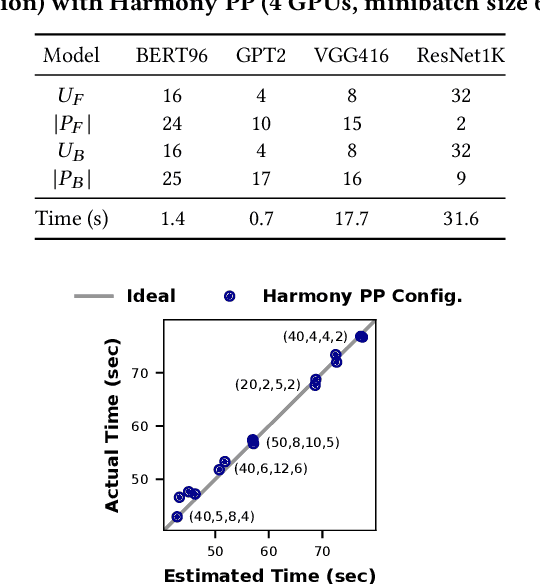

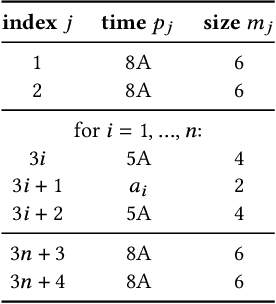
Abstract:Deep neural networks (DNNs) have grown exponentially in complexity and size over the past decade, leaving only those who have access to massive datacenter-based resources with the ability to develop and train such models. One of the main challenges for the long tail of researchers who might have access to only limited resources (e.g., a single multi-GPU server) is limited GPU memory capacity compared to model size. The problem is so acute that the memory requirement of training large DNN models can often exceed the aggregate capacity of all available GPUs on commodity servers; this problem only gets worse with the trend of ever-growing model sizes. Current solutions that rely on virtualizing GPU memory (by swapping to/from CPU memory) incur excessive swapping overhead. In this paper, we present a new training framework, Harmony, and advocate rethinking how DNN frameworks schedule computation and move data to push the boundaries of training large models efficiently on modest multi-GPU deployments. Across many large DNN models, Harmony is able to reduce swap load by up to two orders of magnitude and obtain a training throughput speedup of up to 7.6x over highly optimized baselines with virtualized memory.
SysML: The New Frontier of Machine Learning Systems
May 01, 2019Abstract:Machine learning (ML) techniques are enjoying rapidly increasing adoption. However, designing and implementing the systems that support ML models in real-world deployments remains a significant obstacle, in large part due to the radically different development and deployment profile of modern ML methods, and the range of practical concerns that come with broader adoption. We propose to foster a new systems machine learning research community at the intersection of the traditional systems and ML communities, focused on topics such as hardware systems for ML, software systems for ML, and ML optimized for metrics beyond predictive accuracy. To do this, we describe a new conference, SysML, that explicitly targets research at the intersection of systems and machine learning with a program committee split evenly between experts in systems and ML, and an explicit focus on topics at the intersection of the two.
Dynamic Control Flow in Large-Scale Machine Learning
May 04, 2018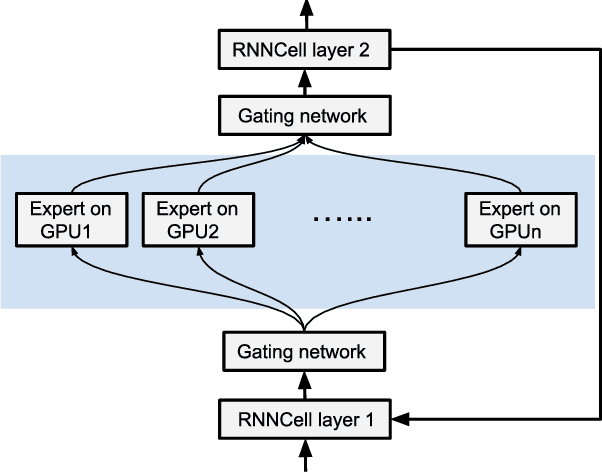

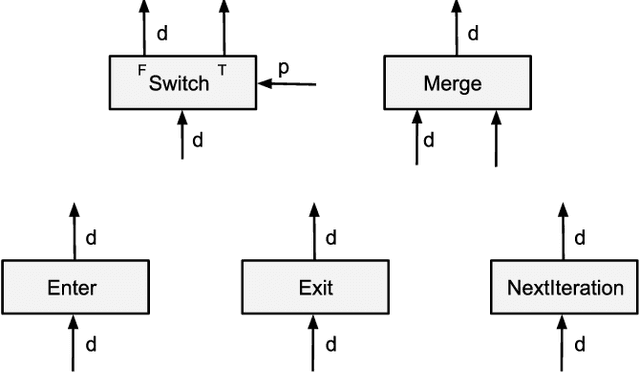
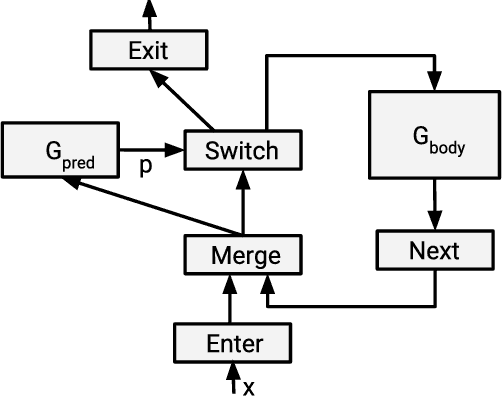
Abstract:Many recent machine learning models rely on fine-grained dynamic control flow for training and inference. In particular, models based on recurrent neural networks and on reinforcement learning depend on recurrence relations, data-dependent conditional execution, and other features that call for dynamic control flow. These applications benefit from the ability to make rapid control-flow decisions across a set of computing devices in a distributed system. For performance, scalability, and expressiveness, a machine learning system must support dynamic control flow in distributed and heterogeneous environments. This paper presents a programming model for distributed machine learning that supports dynamic control flow. We describe the design of the programming model, and its implementation in TensorFlow, a distributed machine learning system. Our approach extends the use of dataflow graphs to represent machine learning models, offering several distinctive features. First, the branches of conditionals and bodies of loops can be partitioned across many machines to run on a set of heterogeneous devices, including CPUs, GPUs, and custom ASICs. Second, programs written in our model support automatic differentiation and distributed gradient computations, which are necessary for training machine learning models that use control flow. Third, our choice of non-strict semantics enables multiple loop iterations to execute in parallel across machines, and to overlap compute and I/O operations. We have done our work in the context of TensorFlow, and it has been used extensively in research and production. We evaluate it using several real-world applications, and demonstrate its performance and scalability.
* Appeared in EuroSys 2018. 14 pages, 16 figures
TensorFlow: Large-Scale Machine Learning on Heterogeneous Distributed Systems
Mar 16, 2016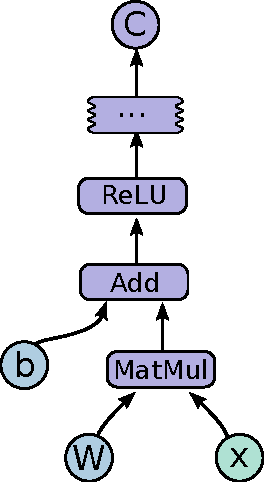

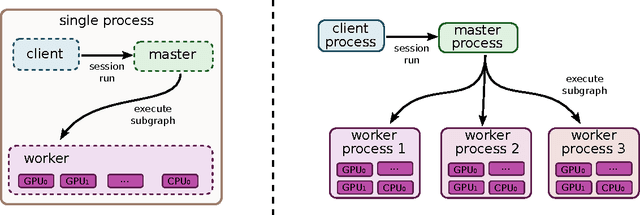
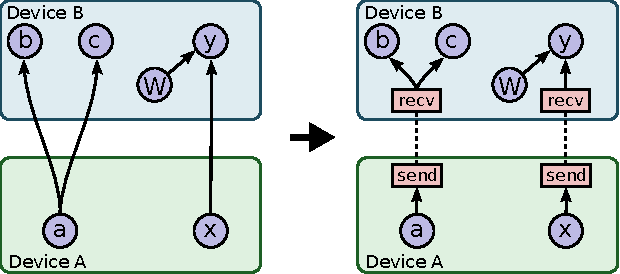
Abstract:TensorFlow is an interface for expressing machine learning algorithms, and an implementation for executing such algorithms. A computation expressed using TensorFlow can be executed with little or no change on a wide variety of heterogeneous systems, ranging from mobile devices such as phones and tablets up to large-scale distributed systems of hundreds of machines and thousands of computational devices such as GPU cards. The system is flexible and can be used to express a wide variety of algorithms, including training and inference algorithms for deep neural network models, and it has been used for conducting research and for deploying machine learning systems into production across more than a dozen areas of computer science and other fields, including speech recognition, computer vision, robotics, information retrieval, natural language processing, geographic information extraction, and computational drug discovery. This paper describes the TensorFlow interface and an implementation of that interface that we have built at Google. The TensorFlow API and a reference implementation were released as an open-source package under the Apache 2.0 license in November, 2015 and are available at www.tensorflow.org.
 Add to Chrome
Add to Chrome Add to Firefox
Add to Firefox Add to Edge
Add to Edge